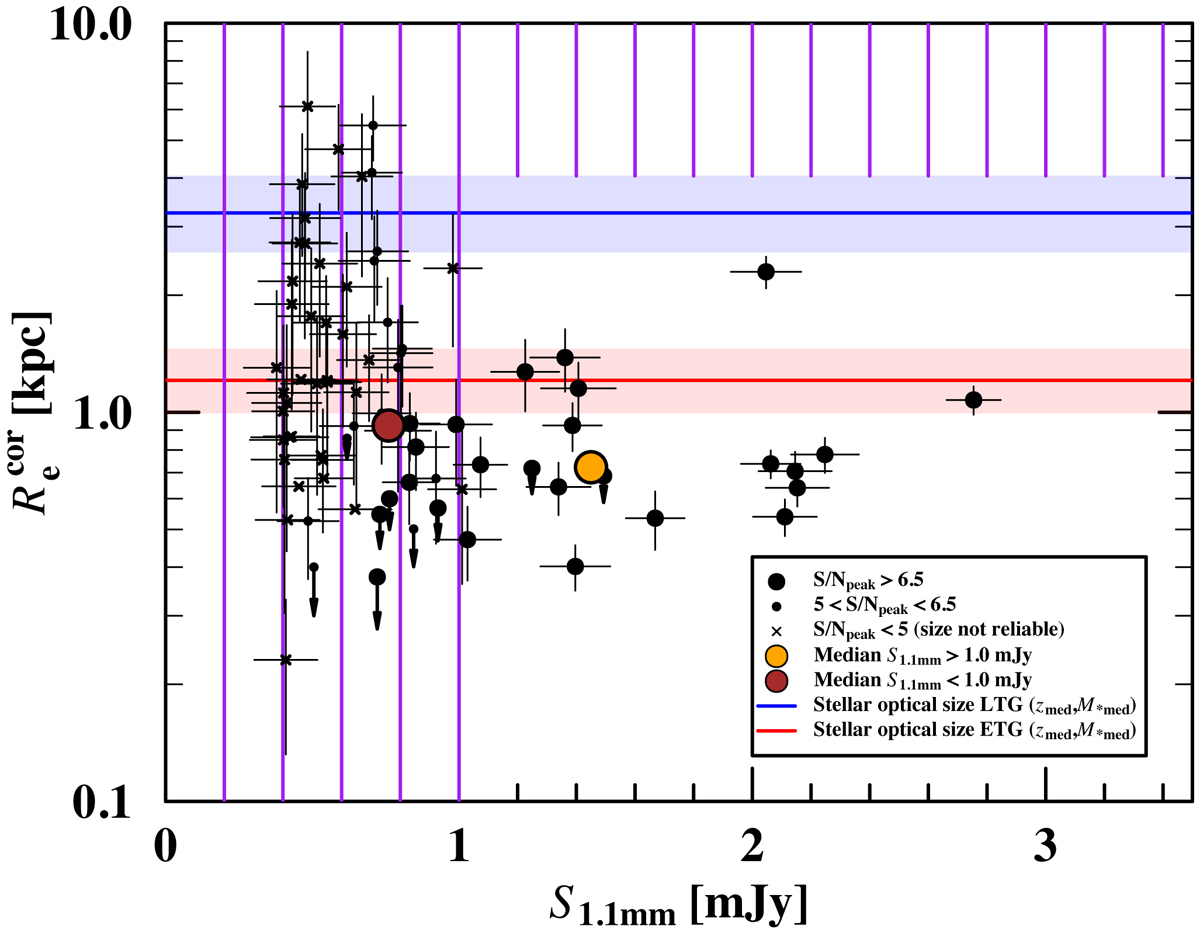Fig. 16.

Download original image
Physical dust continuum size at 1.1 mm corrected to a common redshift and stellar mass (zmed = 2.46 and log(M*med/M⊙)=10.79) versus 1.1 mm flux density for the sources in the 100% pure plus prior-based catalogs from the combined dataset. For sources in the 100% pure main catalog we distinguish detection S/Npeak > 6.5 (big black circles, representing approximately the top third of the source catalog) and detection 5 < S/Npeak < 6.5 (small black circles). The sizes of sources in the prior-based supplementary catalog (which have a detection S/Npeak < 5) are unreliable (shown as crosses), but their 1.1 mm flux densities are well constrained and, thus, we know their position in the x-axis. Median corrected dust continuum sizes for S1.1 mm > 1 mJy sources (orange circle) and S1.1 mm < 1 mJy sources (brown circle) are also displayed. The typical size of the stellar distribution measured at optical wavelengths for both early and late-type galaxies from van der Wel et al. (2014) at zmed and M*med are also shown with their scatter as a shaded areas. The grid of purple lines shows the region where we are no longer ∼100% complete. Compact dust continuum emission at S1.1 mm > 1 mJy prevails and sizes as extended as typical star-forming stellar disks in this flux density regime are rare.
Current usage metrics show cumulative count of Article Views (full-text article views including HTML views, PDF and ePub downloads, according to the available data) and Abstracts Views on Vision4Press platform.
Data correspond to usage on the plateform after 2015. The current usage metrics is available 48-96 hours after online publication and is updated daily on week days.
Initial download of the metrics may take a while.


